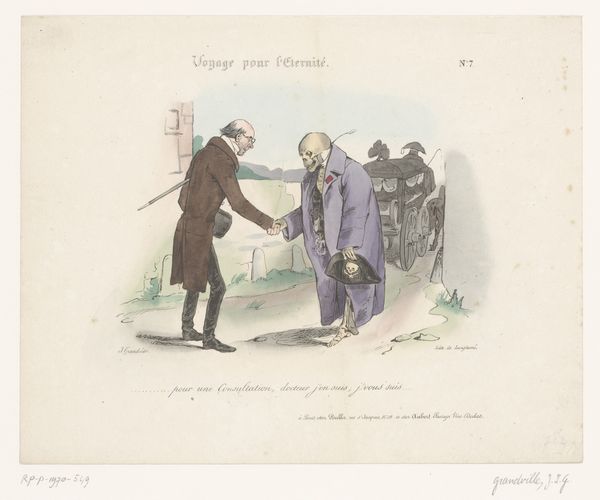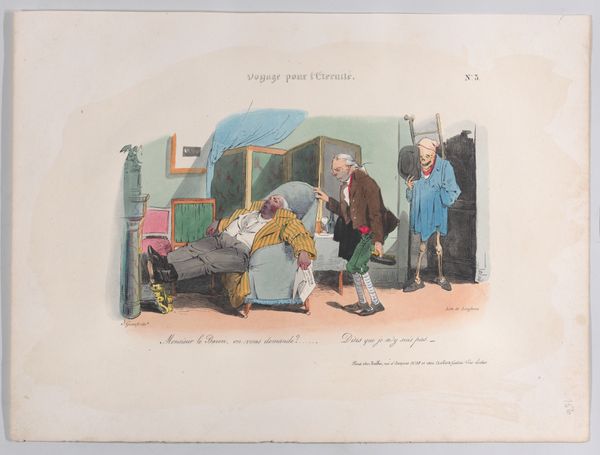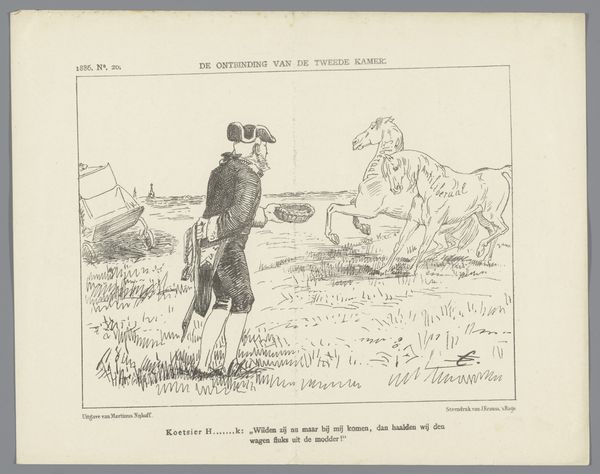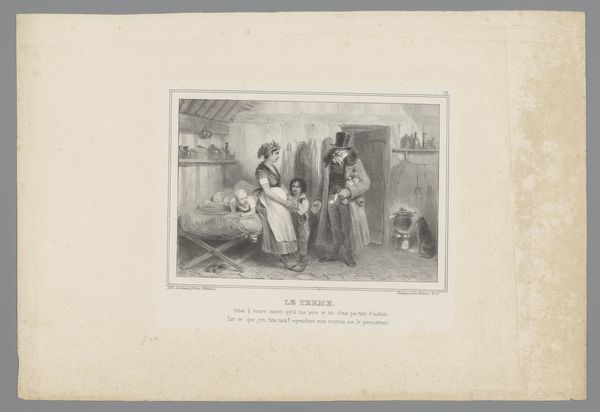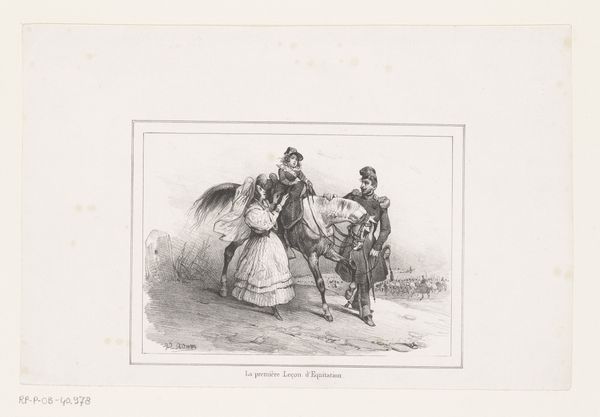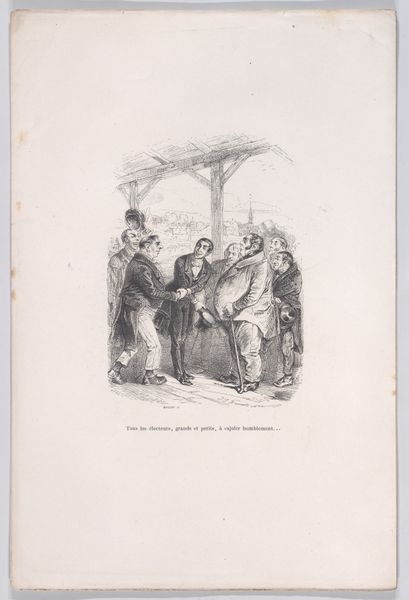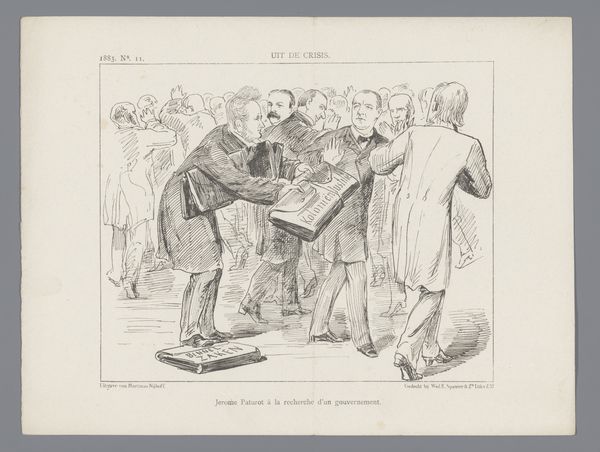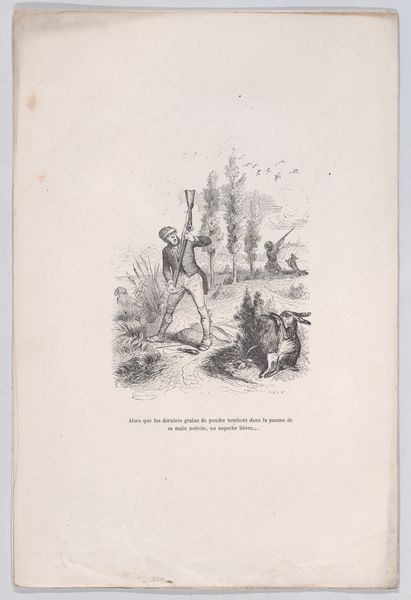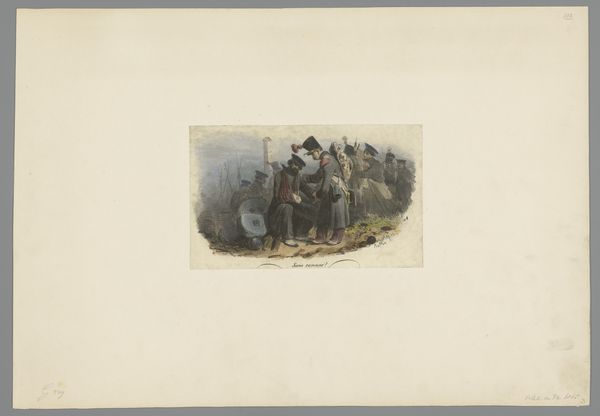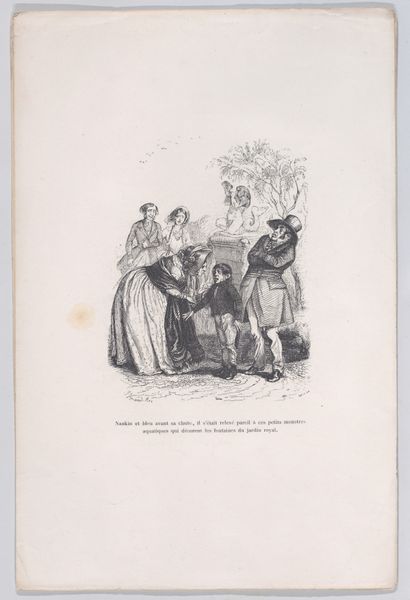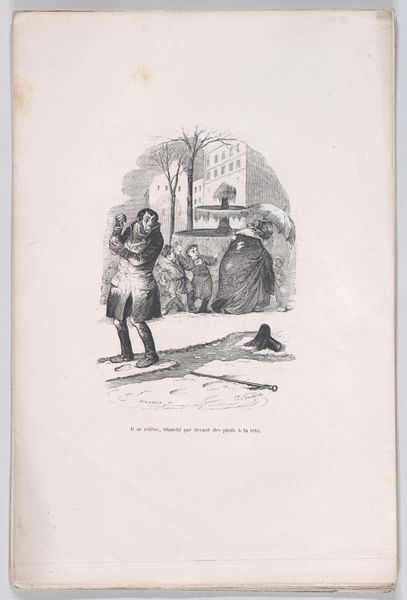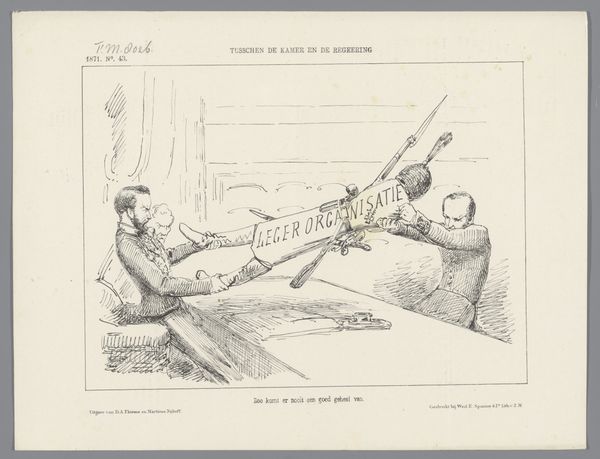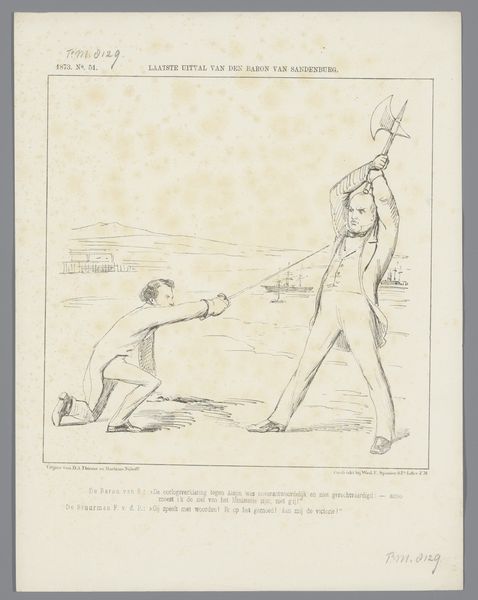
drawing, coloured-pencil, lithograph, print
#
drawing
#
coloured-pencil
#
lithograph
# print
#
caricature
#
coloured pencil
#
romanticism
Dimensions: Sheet: 8 1/8 × 9 5/8 in. (20.6 × 24.4 cm)
Copyright: Public Domain
Curator: This lithograph with coloured pencil, created sometime between 1825 and 1835 by J. J. Grandville, is called "So there was no noise in Paris?" It currently resides here at the Metropolitan Museum of Art. What’s your initial read? Editor: Macabre meets…dapper? I'm immediately struck by this sense of sophisticated doom. Death, personified, is making deals with…the bourgeoisie, perhaps? There's a strange formality to it, as if even mortality requires a social contract. Curator: Absolutely, and that's where Grandville’s genius shines. He weaponizes politeness and elevates absurdity to high art. The top hat in Death's skeletal hand, the hearse waiting in the background like a hired town car—it's all exquisitely, morbidly funny. The romanticism feels biting, like the coloured pencil has venom in it. Editor: Indeed, it feels very loaded. Let's dissect the imagery. The handshake itself – such a simple gesture, yet here it signifies agreement, perhaps even a Faustian bargain. The gentleman is led to the inevitable travel carriage, to meet his inevitable ending in death and solitude. The shadow cast onto both is shared, which seems significant; where one life ends another takes him towards eternal silence. Curator: A visual representation of the human condition then! Death as the great negotiator. There's a dark irony in that, considering the rising bourgeois class in France at the time. Grandville highlights the absurdity of chasing status and wealth, only to meet the same fate as everyone else. Editor: And there are smaller details here. Like the way both of them stare away, completely ignoring the existence of the other. Perhaps, the death stares into nothing and is bored and disinterested, as that encounter became its most boring everyday occurance. I would argue Grandville employs cultural memory here—notions of decorum, the visual signifiers of status—to expose our shared fate, our absolute certainty of the end. This sense of anxiety and impending, lonely end remains so relevant even today. Curator: A great perspective. For me, this work serves as a beautifully dark reminder to actually live, perhaps to even rebel and cause a little pleasing noise in Paris instead of settling into predictable patterns dictated by society and a life spent without purpose. Grandville’s piece is so incredibly rich and still invites further exploration. Editor: It is definitely haunting. I am forever intrigued by how a humorous, gentle drawing can hold such poignant meditations on the fleeting nature of our existence.
Comments
No comments
Be the first to comment and join the conversation on the ultimate creative platform.
